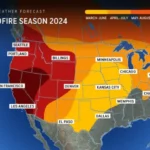Though usage based insurance (UBI) has been around for some time, the use of telematics is expected to expand, according to Dawn Mortimer, assistant vice president of IoT/Telematics Claims Product Development for Verisk Insurance Solutions.
“I’ve worked at carriers where we’ve had and ran telematics programs, connected car programs, and we have rarely touched the surface here yet in what we’ve done so far,” said Mortimer. “Usage based insurance has been around for a while, but we’ve been, from an insurance standpoint and from a market standpoint, really using it minimalistically to drive rates and behavior changes minimally, but I think there’s a whole opportunity where telematics is going to be different as we go forward.”
Currently used in auto lines for traditional rate changes and pricing policyholders on how they drive, Mortimer said there is so much more that can be done with the data, especially in claims and to better understand what it means for customer service and engagement.
As more things become connected, telematics will become increasingly important, she said.
“Beyond that, thinking about the car connected to the home, connected to other cars on the road. Right now we’re dealing with a lot of driver decision making at this point and not knowing how the other driver is going to react puts us in a very defensive mode, but I think with telematics…you’re going to see cars talking to each other. And so, there’s no question…about whose turn it is at the roundabout to head out into traffic,” Mortimer said.
Connected cars will benefit from weather updates and telematics will help self-driving cars navigate other routes in the event of a storm. In addition, Mortimer said that geolocation will allow businesses on a route to offer coupons and deals.
Claims will specifically benefit from telematics data by allowing connected cars to automatically connect with an insurer at the time of a crash.
“So, now the insurance company isn’t waiting for that customer to let them know down the line. It’s instantaneous,” Mortimer said. “You can start automating the claims process even to the point of knowing the year, make and model of that vehicle, what’s the price value, is it worth repairing and fixing, and if indeed it is, then they can deploy it to a local body shop that can pre order the parts.”
This, she said, will result in a better customer experience and greater claims efficiency for the insurer.
Mortimer forecasted how she sees UBI and telematics being used five years from now.
“I think as we continue to evolve down this path of enabling telematics expect that there will be…connected car policies,” Mortimer said.
In addition, she expects that vehicles will not only communicate with other vehicles, but also with the environment.
“If there’s an accident in an upcoming route based on where you drive to work or drive to home, it can actually help you reroute your traffic pattern to a faster way to get around it,” Mortimer said.
All that data collection means insurers will need to have capabilities to expand their databases to ingest all of the data, including video and audio recordings, she said.
“We’re really needing to be able to track and manage many different ways that data would come to insurers. Having the scalability that maybe they’ve never had before and the ability to interrogate and understand the intelligence of many different types of data,” Mortimer added.
Insurers will need to think about data security as well.
“There’s a lot of cyber security activity that insurers may need to focus on,” Mortimer said. “They don’t have to be the experts at it. Really, employing partner companies that create a valuable ecosystem and bring together the data storage, the cyber aspects of it all as well as understanding the intelligence behind those analytics.”
Harnessing the power of telematics can seem daunting, but Mortimer said insurers just need to partner with the right vendors.
“Insurers don’t need to feel they’re on an island,” she said. “There’s definitely a lot of partners that can help make that a more seamless process and bring the intelligence to them instead of them having to go find it within their systems today.”
Was this article valuable?
Here are more articles you may enjoy.

 2024 Wildfire Forecast Calls for ‘Below Average’ Season
2024 Wildfire Forecast Calls for ‘Below Average’ Season  Supplemental Claims Don’t Need to Include Damage Estimates, Fed Appeals Court Says
Supplemental Claims Don’t Need to Include Damage Estimates, Fed Appeals Court Says  California Chiropractor Sentenced to 54 Years for $150M Workers’ Comp Scheme
California Chiropractor Sentenced to 54 Years for $150M Workers’ Comp Scheme  Beyond the Claim: How Social Canvassing is Transforming Insurance Fraud Detection
Beyond the Claim: How Social Canvassing is Transforming Insurance Fraud Detection 